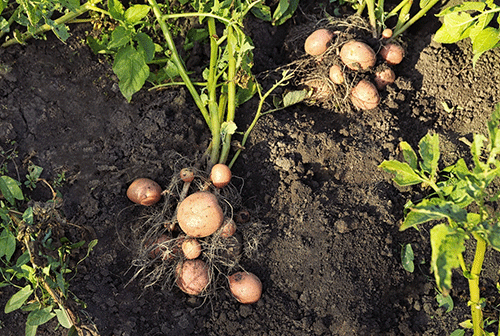Summer is approaching fast, and this is an opportune time for farmers to get ready for cultivating vegetables. Vegetables get to thrive if planted in the right season at the right time for optimum yield. When vegetables are grown in the wrong season, a farmer may experience pests, diseases and poor germination rates that may all lead to crop failure.
Tomato (Solanum lycopersicon) is one vegetable that farmers can grow during the warm lengthy days of summer. It is usually grown for red tomato fruits that are used to produce tomato sauce, jam and used in vegetable salads among other uses.
Tomatoes normally prefer sandy loam soil, which allows easy root development and has good drainage and aeration (air circulation). Tomatoes require Nitrogen (N), Phosphorus (P) and Potassium (K) also known as NPK. These are macronutrients needed by plants in larger quantities. In addition, tomatoes need a supplementary application of Potassium rich fertilizers (such as Potassium phosphate) at the flowering stage of the crop to encourage good fruit formation.
Potato (Solanum tuberosum) is also a summer vegetable and the best time to grow it is from February to May. Potatoes are normally grown for their round bulbs that develop on the roots. They prefer sandy loam soil that allows good drainage, aeration and root development.
Potatoes just like Tomatoes require NPK, and at flowering stage, they require additional phosphorus, which can be obtained from applying Superphosphate. A raised seedbed should be developed and maintained to ensure that roots are completely covered with soil to ensure that the potatoes fully develop to their maximum potential.
Green beans (Phaseolus species) are another summer vegetables that are very sensitive to frost and it is commonly known as dwarf beans or snap beans. Green beans grow well in most soils that are loose, well aerated and well drained. Beans also require macro nutrients (NPK) and a few trace elements such as Calcium (Ca) and Magnesium (Mg), which are micronutrients, needed in smaller amounts.
Always ensure that enough water is applied to the seedbeds containing beans when the plants begin to bloom and form pods.
Sweet potato (Ipomoea batatas) is a vegetable that is grown in summer for its swollen roots that are very delicious and tasty when cooked. Sweet potatoes prefer well drained sandy-loam soils that are loose, well drained and aerated to ensure good root development and growth.
Enough supply of water should be given throughout the growing season and soil must be drawn up to the plants using a garden rake to ensure that the roots grow well for a good harvest. Gradually reduce watering two to three weeks before harvesting.
Green peppers (Capsicum annuum) are closely related to tomatoes and are also grown for their green fruits. They grow in almost any type of soil, but they thrive best in a soil that warm up quickly in spring. The soil should be well drained, aerated and have good water holding capacity.
Macro nutrients (NPK) are required throughout the growing season. Adequate water is required, especially when flowers start to develop and blossom. Spraying or watering using a watering can improves fruit formation and promotes a good harvest.
There are so many varieties of vegetables that can be grown during summertime such as cucumbers, pumpkins, sweet melons, and watermelons to mention a few. Always be advised that before undertaking any production, determine your soil status (via a soil sample test), climatic or environmental requirements and water requirements of each vegetable and lastly the market demand in your constituency/or region.
* Hanks Saisai is Agribank’s technical advisor for crops and poultry.


